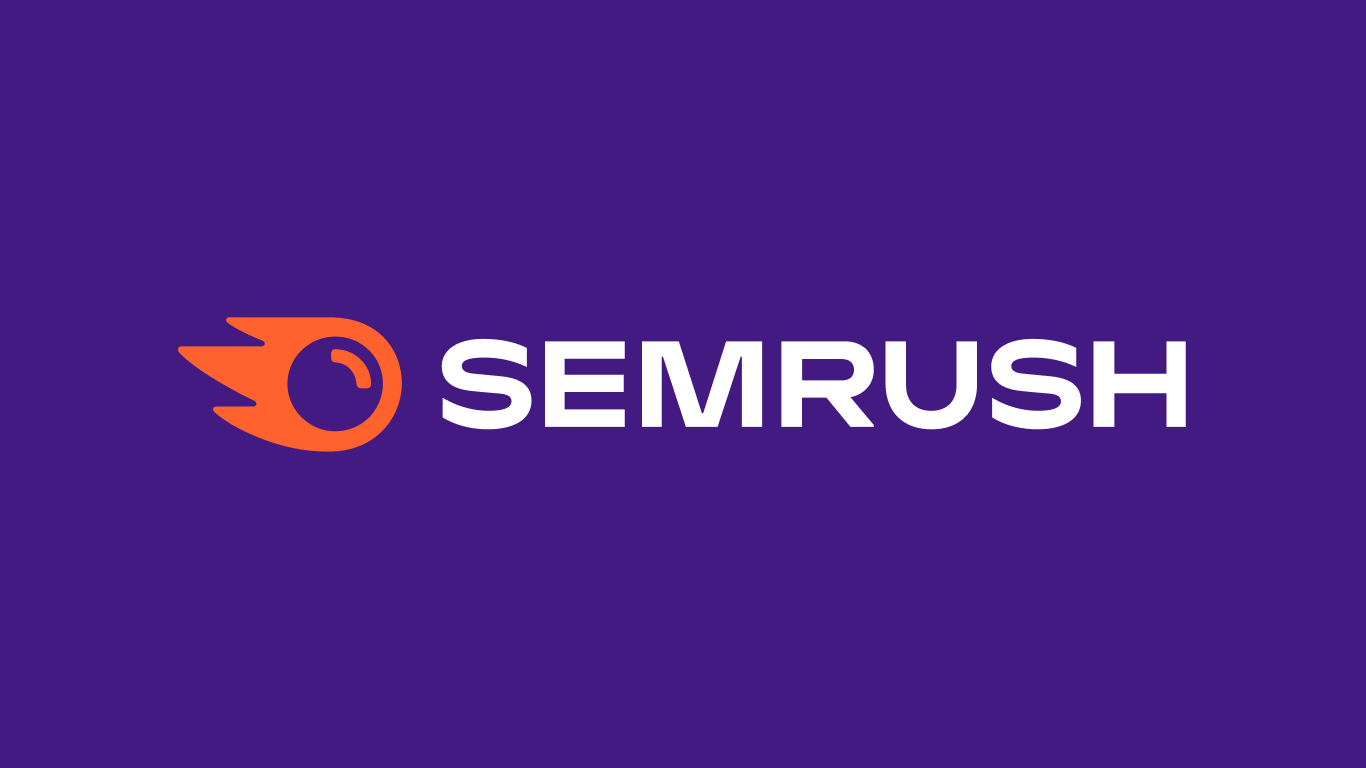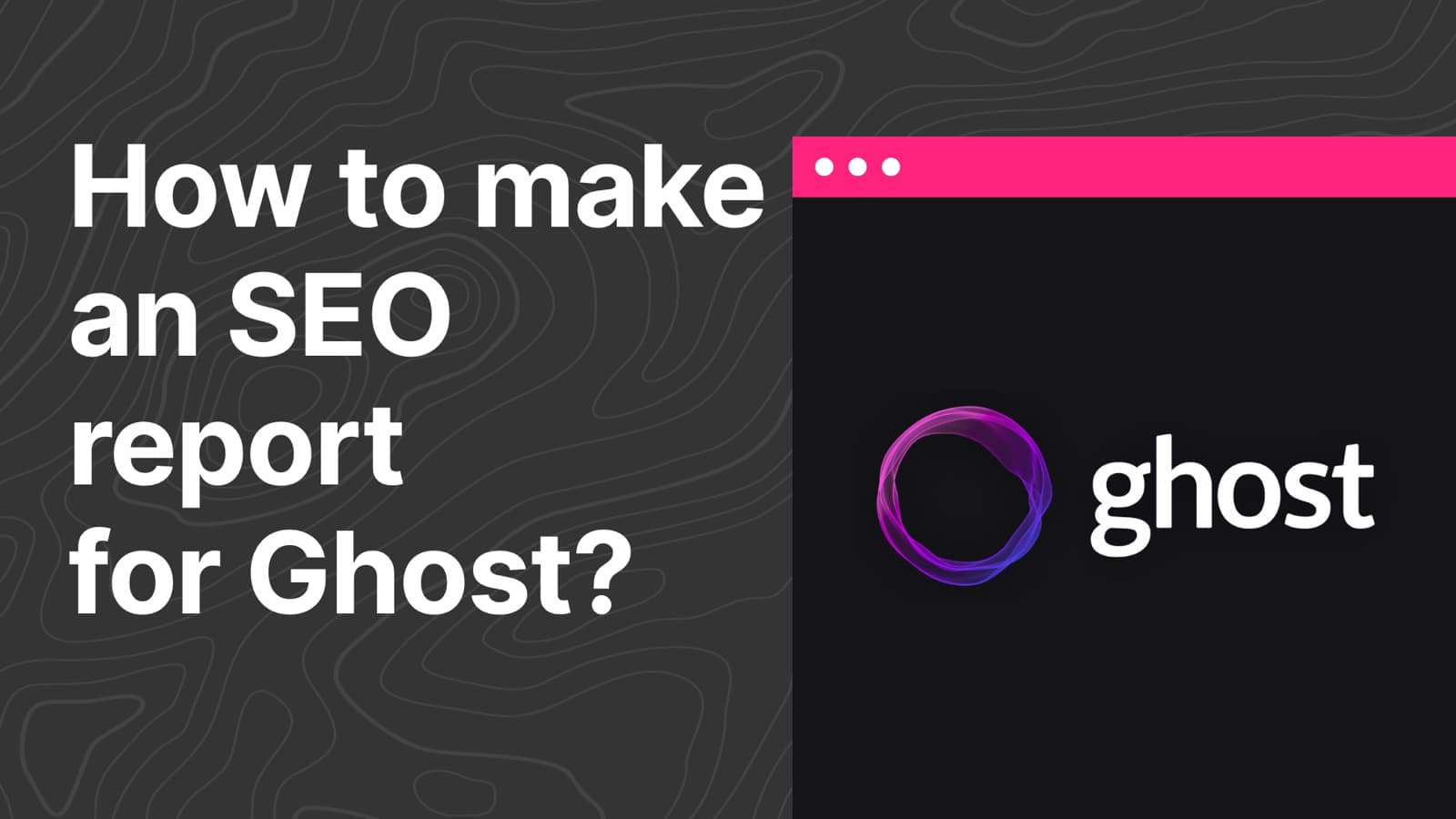
Ghost SEO reports present some variations with respect to traditional web analytics or conversion reports that must be taken into account
Obviously, it is necessary to analyze the organic traffic generated in greater detail, but there are also a series of metrics external to the web (link profile, naturalness and variety of links, rankings, link building report) that is relevant to know the state of a web page and that it is impossible to obtain from a traditional analytics tool.
Here is the tools you can create SEO reports for Ghost





Let's see what points are important and which to prioritize in an SEO report:

Traffic sources
Although it is something elementary, SEO is usually the largest source of traffic for a website. Giving a global vision to the client of the importance of this medium can be a very good way to start a report, especially in small clients or with limited knowledge of the online medium.
Branded and non-branded traffic
Although the evolution of SEO traffic is important (is it growing, decreasing or are we stagnant?), its segmentation is even more important. Knowing which users arrive because they are looking for our brand name -it is important to include common errors when writing it- is vital to identify possible reasons for the variations in traffic.
An increase in SEO traffic may be due to the fact that we have obtained 50 new links in a week, to the fact that we have optimized the onsite incredibly or because for a reason totally external to us the company has been a trend, people have searched for it, and it has reached our page. Knowing how to identify and differentiate these points is what makes us a better analyst and a better SEO.
Tip : Google Trends can allow you to check search trends for your brand name, a product or a section that has had a sudden increase in SEO traffic.
The not provided traffic on Google Analytics
When it comes to labeling brand and non-brand traffic, we will come across a problem: not provided traffic . First of all, try to explain to your client what not provided is and its importance.
Trick : One way to differentiate between brand and non-brand traffic is by extrapolating the not provided traffic between the other two segments, although the higher the percentage, the less reliable the data obtained.

Traffic per landing
Since keywords have lost effectiveness in identifying where traffic is coming from, landing pages have quickly replaced them.
Knowing which keyword each page is intended for, it is relatively easy to identify the traffic that which keywords are receiving. When we consider variations and long tail we see that we have to refer more to a theme than to a rigid set of keywords.
Keywords Ranking
The keyword ranking allows us to establish a relationship between the traffic you receive and your position in the main terms considered in the strategy. Ideally, there is a clear correlation between the average position within the ranking and the SEO traffic that is received.
Unfortunately personalized searches, influence of social networks, influence of location and search history, knowledge graph and a long list of etcetera have made this correlation not as important as it used to be, and in mature accounts it may be advisable not to pay as much attention to keywords and rankings.
The reality is that, as a general rule, the lower the knowledge of the client, the more importance it will give to the rankings and the more importance you should give it in your reports.
As a basic rule, indicating current and last month's positions along with the variance is a good idea. Remember that if you do it through tools, there are hundreds that allow you to measure rankings, although the two that have given me the best results are Authority Labs and SEMrush. If you decide to do it manually, remember to do it in incognito session without being logged into any Google service. Still, remember that your search will be determined by your location and other factors that may vary.
Tip: If you want to present a history of the evolution of rankings or you have doubts about how to show it to the client, check this post by José B. Moreno on the visualization of SEO rankings .

Link profile
The link profile is a determining factor in the evolution of a web page.
That you are constantly getting links from new domains is the best guarantee (along with good on-page optimization) that your visits are going to skyrocket. Therefore, parameterizing it as an essential element of the campaign is very important.
Contrary to rankings, since it is not something that the CEO can look at from the laptop in 1 minute, sometimes the client does not care. In these cases, we must find a balance between educating the client so that he knows that it is an important metric and not giving too much visibility to a metric that he does not yet understand.
If you are at a point where the website is perfectly optimized and you need a link building effort, it is important that we prioritize this metric. Adding the profile of the competition's links can help introduce the concept of "ego" in such a way that a disadvantageous situation is evident.
How to measure the link profile? In this case there are hundreds of tools, from alexa to moz , through majestic or raven tools . Getting wet, our recommendation is ahrefs , with reasonable prices, some free options and an extensive link profile with constant updates.
Competitor Information
In addition to the competitor's link data, or comparing the visibility of each one through rankings and tools, the ideal thing in a report is that you give information on what the others are really doing.
For example, if a competitor is growing a lot in visibility and traffic, it is convenient to analyze their blog and social channels and the most recent links detected in order to analyze what strategies or tactics are giving those results. On many occasions, providing a client with information on the marketing and communication effort behind the link profile, mixed with its competitiveness, can make them take link building, link baiting and content generation efforts seriously.

Link building work
Not all SEO campaigns include link building work, but if they do, it is recommended that the report include a description of the work done. Keep in mind that this is a part of the job that your client is not seeing and many times the job description and knowing that something is being done is all that is needed.
They can be general link building guidelines (such as content creation and viralization, with examples of results) or a list of link building efforts.
If you are going to take the second route, it is important that they contain, at least, the following information:
- Link to the page where the link is : So that the veracity of the information can be verified.
- How to obtain the link : It is different if you have obtained the link through contact, with a comment, registering in a directory or passively thanks to content.
- To which page the link links : To emphasize that we are reinforcing the SEO of the landing pages that we prioritize, and to demonstrate that we also add variety and naturalness to the pages that we link to and that not all links go to the home page.
Apart from these aspects and depending on the knowledge of your interlocutor, you can expand the information with the following points, although in most cases it would be overloading the client.
- Indication if the link is follow or not : We will always prefer follow links, because they are the ones that really add value. That said, Google detects no-follow links, and although they theoretically have no SEO value, they are a natural part of the links generated on the web and should be taken into account. Put another way, a great link profile that is 100% followed is unnatural, so nofollow has SEO value in its own way.
- Indication of the anchor text of the link : See what text the link has. To demonstrate that we do not use terms that can be classified as link spam, that we vary the text that we put and it is natural, but at the same time we optimize the value it provides.
- Indication of the authority of the page , through PageRank, MozRank, or other methods that you commonly use.
- Typology of the page : Blog, database, wiki, directory, social network, information medium, etc. to see the variety of link building work.
- Theme of the page : Education, economy, motor, fashion... to see the relevance that it shares with your website.
- Domain TLD : In which domains are you generating the links (.es, .com, .ru). It makes sense if your client is very concerned about black hat, or if you want to get extra local value by getting links from one country.
Always explain what you see related to SERP
Although the data is important, most of it will be accessible to a person with a medium knowledge of analytics and basic SEO. What really gives value to the report is the explanation behind it: if you are not going to present it in person, it is essential that the document contains an explanation of:
- What is being seen at all times
- The source of the data , which specific metric is being analyzed, and the time of the query
- What does the data mean : Is it good or bad? What they owe? What have we done to make them like this? Are there peaks or valleys to explain?
- How to do to change them (if it goes wrong) or keep them (if it goes well)? I mean, what's next?
Your value as an expert -or at least as a person in charge of the SEO of someone else's page- is knowing not only to indicate the current state of the page in a simple and understandable way, but also to guide the actions of your client through your report and your advice. not only so that they understand what needs to be done and what effect it will have, but also so that they embrace your vision and become actively involved in the SEO of their page.
We don't have to be afraid that the client's increased knowledge about SEO will displace us as an SEO or as an agency: The more the client knows, the better they will be able to understand our work and the more they will be able to help us. If there comes a time when a client decides to internalize the service we provide, it is not because we have taught them, but because we have not been able to adapt to the situation and migrate our role from execution to the tactical and strategic plan , which is where it should be our greatest value.
And how is this done?
Well, continually presenting new proposals. Remember that SEO work has no end, and has ramifications in so many disciplines that we cannot and should not limit it to technical analysis and link building.
When the client's website is audited, we propose maintenance or technical optimization to improve loading times. Then, let's propose a content strategy, a local SEO strategy, the creation of a blog, a blog hunting action, user testing, CRO, Social Media, etc.
All these points can be approached from an SEO perspective and provide enormous value to the client, so that if he assumes an area we are always climbing to be able to provide greater and more strategic value. The reports, ultimately, are what give us the questions and answers about what our next move should be.







